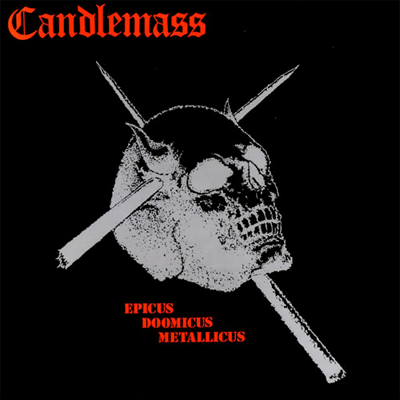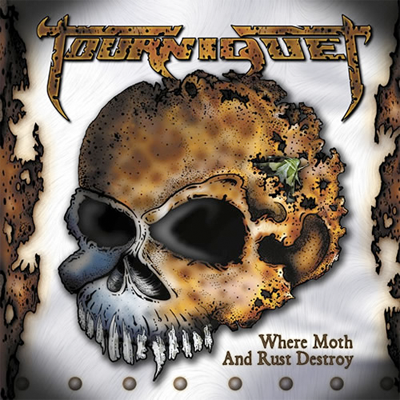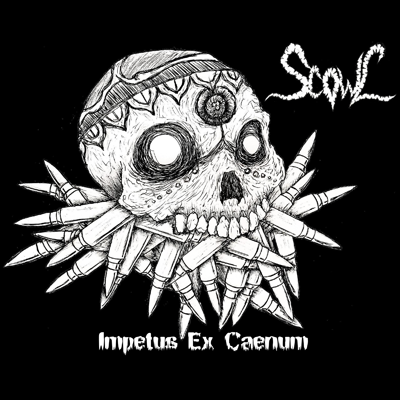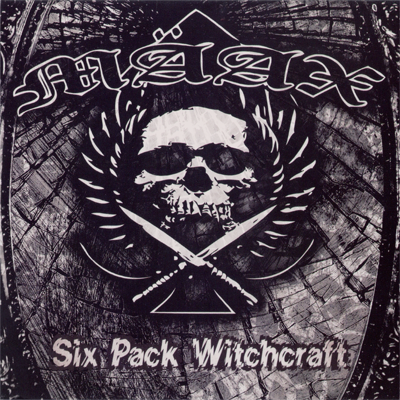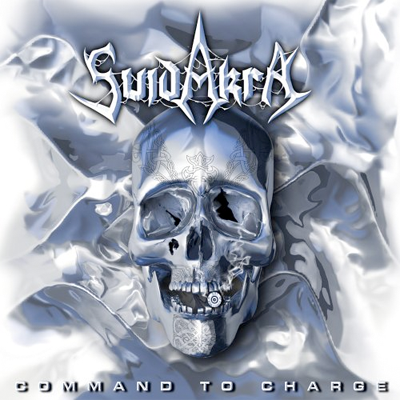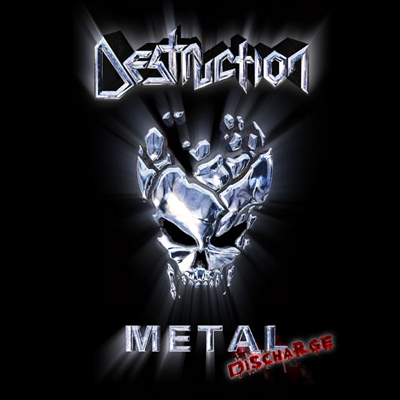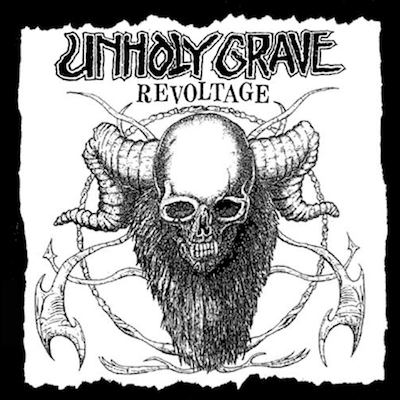
RIPPER, Into Oblivion (2010, Blackwater)
The skull:
This could technically be disqualified as unworthy of BDS’s strict standards under the “no skulls” rule. This skull is carrying a kind of necklace of two smaller skulls, but they were ruled inconsequential in a controversial Council 5-4 ruling. Also note that since this skull has no neckbones, it can hardly be called a necklace. Just a couple skulls clinging to some sinew or spew handing off the main skull’s chin. The big skull itself is one horny bastard. Leering with evil intent isn’t enough to show his malicious intentions, so he has not one but two sets of horns, a smaller set and a ram-like helix, and with some junk dripping off everything, this bad boy is ready to rip. Great cover, we wholly approve!
The music:
This Portland band bring to mind the dirtier work of Chris Black, like a more melodic and traditional metal-slanted Superchrist with the fun energy of High Spirits. Raw and blazing with Motorhead-like speed, it’s the melodic component that really sells this. Like early Iron Maiden with a shot of punky attitude, the riffs and melody lines strangled out by the guitarist are played with a ton of enthusiasm, and while they’re melodies we’ve heard somewhere before, they do their job, giving Ripper a hard-to-dislike sort of appeal. I like the recording, very raw but not deficient in any area…it works perfectly for what they’re doing. The vocals also bring Chris Black to mind — nothing virtuosic, but sung from the gut and heart…and Lemmy-like, of course. Once you get to the middle of the album you realize Ripper is a one trick pony, but it’s a good trick, and it lasts no longer than it should (28 cozy minutes).
— Friar Wagner
